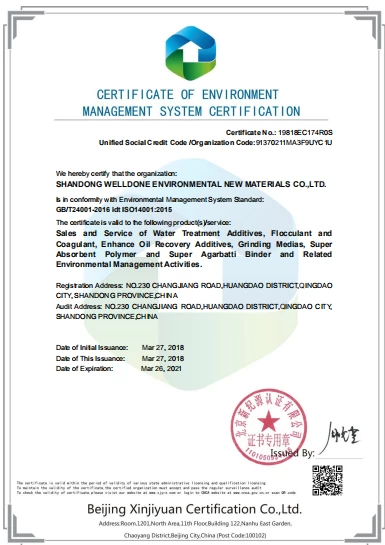The Impact of Potassium Polyacrylate on Crop Growth
Potassium polyacrylate (PPA) is a water-absorbent polymer that has gained significant attention in agricultural practices due to its potential benefits for crop growth. This article aims to explore the effects of PPA on crops and highlight its importance in enhancing agricultural productivity.
Water Retention and Soil Moisture:
One of the primary advantages of using PPA in agriculture is its ability to retain water effectively. PPA can absorb and hold large quantities of water, forming a gel-like substance that releases moisture slowly into the surrounding soil. This property helps combat water scarcity and drought conditions by extending the availability of water to plant roots. Increased soil moisture levels promote seed germination, root expansion, and overall plant growth.
Nutrient Availability:
PPA also plays a crucial role in improving nutrient availability to crops. By absorbing and storing water, it prevents leaching of essential nutrients from the soil, ensuring they are accessible to plants' roots for a more extended period. This promotes proper nutrient uptake, leading to healthier plants with improved resistance to diseases and pests.
Drought Resistance:
The water retention capabilities of PPA make it an excellent tool for enhancing drought resistance in crops. During dry periods, when water supply is limited, the presence of PPA in the soil allows plants to access stored moisture, reducing water stress and maintaining their physiological functions. Consequently, crops treated with PPA exhibit enhanced resilience to prolonged periods of drought, ensuring better yields even under challenging environmental conditions.
Reduced Irrigation Frequency:
With the application of PPA, farmers can significantly reduce irrigation frequency without compromising crop health. The water-retaining capacity of PPA reduces water loss through evaporation and runoff, enabling farmers to optimize water usage. This not only conserves water resources but also lowers production costs associated with irrigation, making agriculture more sustainable.
Enhanced Seedling Establishment:
PPA aids in the establishment of seedlings by providing a favorable environment for their growth. The increased soil moisture and nutrient availability facilitated by PPA promote faster and more uniform germination, resulting in stronger and healthier seedlings. This leads to improved crop stands and better overall yield potential.
Conclusion:
Potassium polyacrylate offers several benefits for crop growth and agricultural productivity. Its water retention properties, ability to improve nutrient availability, drought resistance, reduced irrigation frequency, and facilitation of seedling establishment make it a valuable tool in modern farming practices. By incorporating PPA into agricultural systems, farmers can optimize water usage, enhance crop yields, and contribute to sustainable food production. Continued research and application of PPA hold promise for addressing water scarcity challenges and improving global food security.











